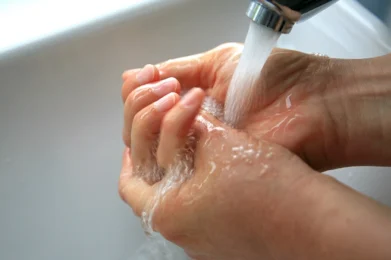In This Article:
- Fevers occur when the hypothalamus raises the body’s temperature above its normal level. A fever generally classifies as any temperature above 100.4 degrees.
- Fevers may be caused by immunizations, overdressing, medication, acute illness or serious illness.
- If your child is experiencing a fever, take them to the doctor if they are under 2 years of age, the fever lasts longer than three days, they develop other symptoms or their temperature reaches 104 degrees.
When your child is sick, the last thing you want to do is worry about a fever.
If your child wakes up in the middle of the night flushed, it’s easy to question what to do next. When should you take your child to their provider for a fever? How do you know if this is a sign of something more serious? Read on to learn what a fever is, what causes a fever and when you should call your provider.
What is a fever?
Fevers occur when the hypothalamus raises the body’s temperature above its normal level. This internal “thermostat” knows what temperature your body should be — around 98.6°F/37°C — and will send messages to the body to keep it that way.
It is common for most people’s body temperatures to change during the day, though. Your temperature is generally lower in the morning and higher in the evening. It can also vary as children play, run around and exercise.
However, the hypothalamus will sometimes “reset” the body to a higher temperature in response to an illness, infection or some other cause. This is so the body can fight off harmful germs and bacteria, according to Medical News Today.
What causes a fever?
Parents should keep in mind that a fever by itself is not an illness. It’s often a sign or symptom of something else. Fevers may be caused by:
- Immunizations: Infants, toddlers and children can experience low-grade fevers after getting vaccinated. This is the body’s normal response to a vaccine.
- Overdressing: Since newborns cannot regulate their body temperature, they can experience fevers from being overdressed or being in hot environments.
- Medication: Some over-the-counter medications and medications to treat high blood pressure and seizures may increase body temperature.
- Acute illnesses: Fevers are often the body’s response to viral and bacterial infections, such as the common cold, flu, pneumonia, strep throat and urinary tract infections (just to name a few).
- Serious illnesses: In rare cases, a fever may be a sign of cancer or an autoimmune disease.
Keep in mind that teething may slightly raise the body’s temperature, but it is not likely the cause if a child’s temperature is higher than 100°F (37.8°C).
When to take your child to their provider for a fever
It’s important to remember that a fever isn’t necessarily bad; however, you should call your provider if:
- Your child is under the age of 2: According to the Centers for Disease Control (CDC), toddlers have less-mature immune systems, so an infection may be a sign of something more severe like bacterial meningitis or pneumonia.
- Your child has other symptoms, or their fever lasts more than three days: If your child is weak or vomiting, they may also be dehydrated. You’ll also want to call a provider if their fever lasts for more than three days.
- Your child has a high fever: Call your doctor immediately if your child’s temperature reaches 104°F and has trouble breathing, a rash, vomiting or diarrhea.
When you call your provider, be prepared to answer questions like:
How long has your child had a fever? When did you last take their temperature? Do they have any other symptoms? This will help the provider determine the right course of treatment.
If you have questions about your child’s fever symptoms, find a nearby Valleywise Community Health Center or call 1 (833) VLLYWSE to schedule an appointment.






